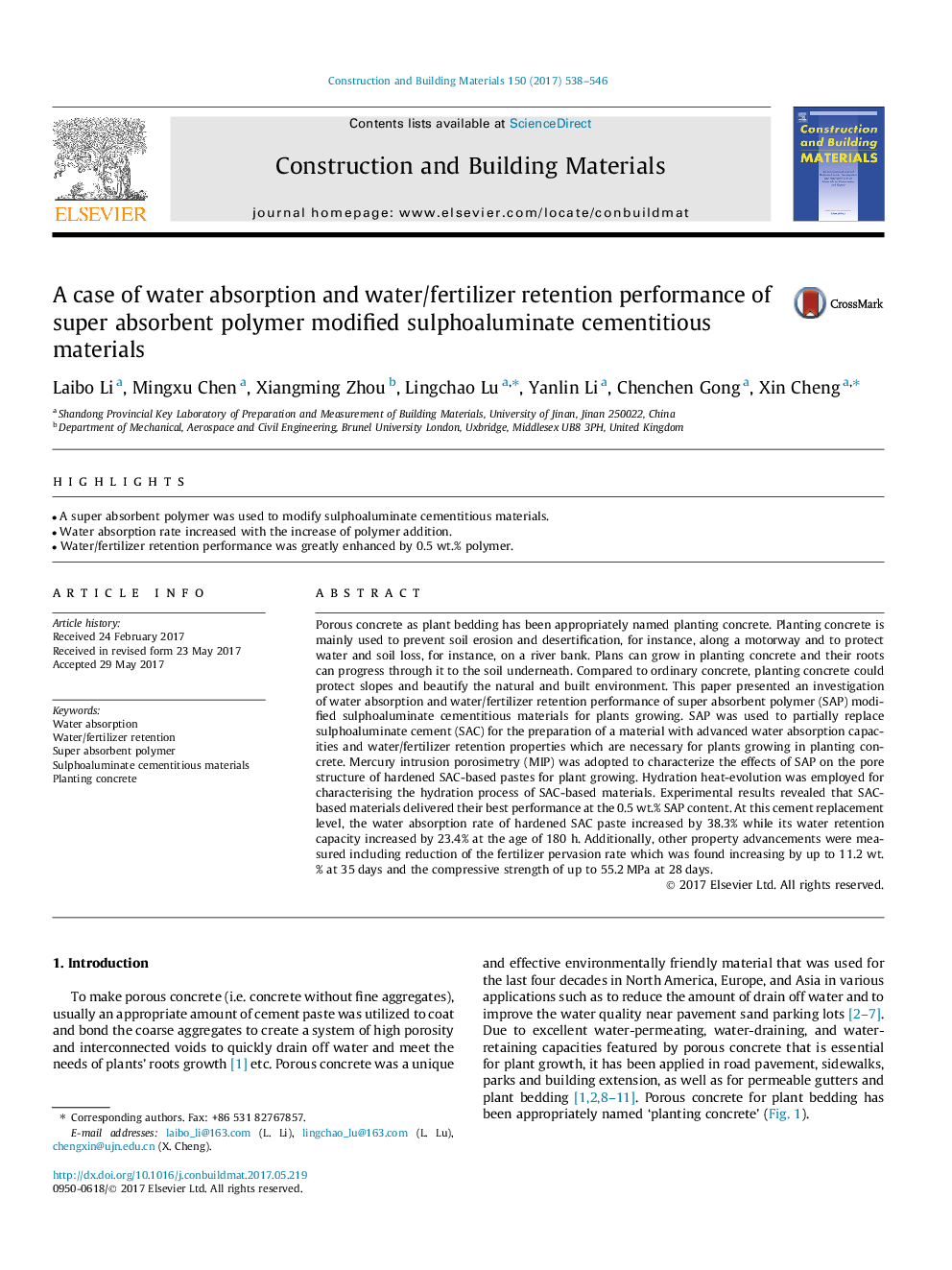| Article ID | Journal | Published Year | Pages | File Type |
|---|---|---|---|---|
| 4918308 | Construction and Building Materials | 2017 | 9 Pages |
Abstract
Porous concrete as plant bedding has been appropriately named planting concrete. Planting concrete is mainly used to prevent soil erosion and desertification, for instance, along a motorway and to protect water and soil loss, for instance, on a river bank. Plans can grow in planting concrete and their roots can progress through it to the soil underneath. Compared to ordinary concrete, planting concrete could protect slopes and beautify the natural and built environment. This paper presented an investigation of water absorption and water/fertilizer retention performance of super absorbent polymer (SAP) modified sulphoaluminate cementitious materials for plants growing. SAP was used to partially replace sulphoaluminate cement (SAC) for the preparation of a material with advanced water absorption capacities and water/fertilizer retention properties which are necessary for plants growing in planting concrete. Mercury intrusion porosimetry (MIP) was adopted to characterize the effects of SAP on the pore structure of hardened SAC-based pastes for plant growing. Hydration heat-evolution was employed for characterising the hydration process of SAC-based materials. Experimental results revealed that SAC-based materials delivered their best performance at the 0.5 wt.% SAP content. At this cement replacement level, the water absorption rate of hardened SAC paste increased by 38.3% while its water retention capacity increased by 23.4% at the age of 180 h. Additionally, other property advancements were measured including reduction of the fertilizer pervasion rate which was found increasing by up to 11.2 wt.% at 35Â days and the compressive strength of up to 55.2Â MPa at 28Â days.
Related Topics
Physical Sciences and Engineering
Engineering
Civil and Structural Engineering
Authors
Laibo Li, Mingxu Chen, Xiangming Zhou, Lingchao Lu, Yanlin Li, Chenchen Gong, Xin Cheng,
